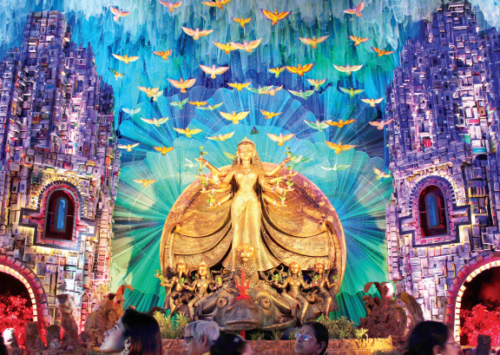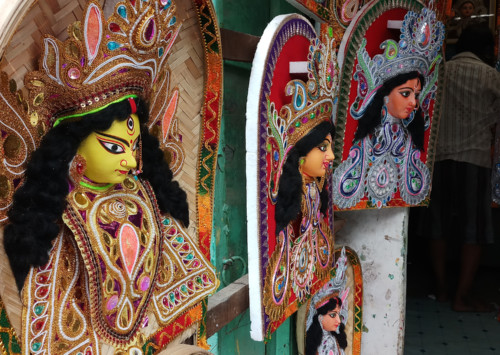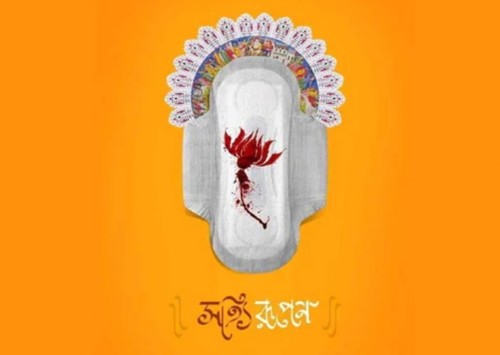Navratri marks the arrival of festive season in India
The festival of Navratri (‘nav’ translates to ‘nine’ and ‘ratri’ means ‘nights’) is dedicated to the Hindu Goddess Durga and lasts for nine nights and ten days. From pujas (worshipping) to traditional Indian dance forms like dandiya and garba, the festival is celebrated in different manners across the country.
During Navratri, the streets in India are brightly lit with fairy lights and bulbs, and people volunteer for putting up a show telling the story of the festival of Dussehra, which follows after Navratri comes to an end. Navratri (literally translating to ‘nine nights’ in Sanskrit language) is celebrated to honour Goddess Durga, who symbolises power and purity.
The festival commemorates the victory of divine powers of Durga, over evil. According to the legends, Durga stamped down the malicious fiend named Mahishasura after nine consecutive days of war. Until today, each day of the celebration is dedicated to a different manifestation of the goddess – Bhadrakali, Amba or Jagdamba, Annapoorna Devi, Sarvamangala, Bhairavi, Chandika or Chandi, Lalita, Bhavani, Mookambika, and of course, Durga.
Navratri is celebrated for different reasons and in different ways across India. For many, it is a time of religious reflection and fasting; for others, it is a celebration of Indian food, and various Indian folk dances like garba and dandiya, especially in the state of Gujarat (west India).
Vegetarian diet and animal sacrifice follows up to Dussehra in the west
If you are in the western parts of India during this period, you will see people following a strict vegetarian diet, abstaining from alcohol and certain spices, during these ten days.
On the contrary, Rajputs in the state of Rajasthan offer a sacrifice of a buffalo or goat to their family goddess during Navratri. People engage in nine nights of enthusiastic dancing, followed by a feast of traditional delicacies on the tenth day, which is observed as Dussehra. The festival celebrates the triumph of Hindu God Rama, an avatar of Lord Vishnu, over the ten-headed demon King Ravana, who abducted Rama’s wife, Sita.
Durga Puja towards the east and north-east
In these parts, Navratri is observed as Durga Puja. The state of West Bengal especially comes to life with traditions and customs taking over daily routine. Streets are decked up with numerous pandals (marquee) – each one having something unique to offer for the devotees. Idols of Goddess Durga in these pandals are worshipped for nine days where people sing hymns in praise of the goddess.
On the tenth day (Dusshera), idols of Durga are submerged into the holy river Ganga. The emersion symbolises the end of the goddess’s annual sojourn to her paternal home and she returns to her husband Lord Shiva at their heavenly abode in Mount Kailash.
Just like in Gujarat, Hindu temples in West Bengal and Assam also witness sacrifice of goats, chickens and buffalos during the festival.
West India
In the western state of Gujarat, the festival truly erupts in vibrant colours, music and dance, bringing the celebrations to life. While women don chaniya cholis (traditional dress), the men look their best in traditional kafni pyjamas with a short kurta.
#DoYouKnow The Garba that is played in Gujarat during Navratri represents the fight of Ma Durga with Mahishasur. The sticks, which were a later addition, represents swords used. It a war dance to be precise ! #HappyNavratri #Dandiya pic.twitter.com/WYMmFiZlta
— Indian Art (@IndiaArtHistory) October 10, 2018
Many people associate these nine days with different colours. While red is worn on the first day, royal blue, yellow, green, grey, orange, white, pink and sky blue, are worn on the successive days.














